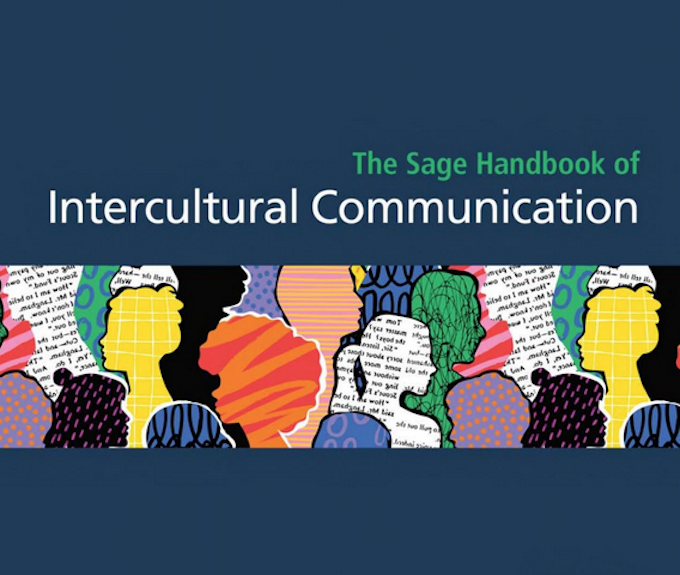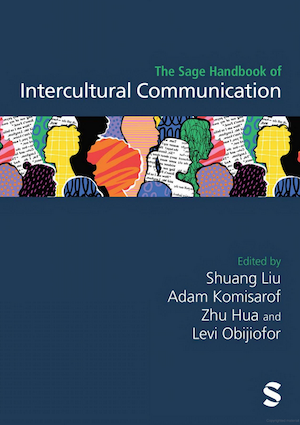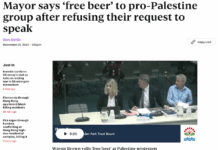
Pacific Media Watch
Four researchers and authors from the Asia-Pacific region have provided diverse perspectives on the media in a new global book on intercultural communication.
The Sage Handbook of Intercultural Communication published this week offers a global, interdisciplinary, and contextual approach to understanding the complexities of intercultural communication in our diverse and interconnected world.
It features University of Queensland academic Dr Mairead MacKinnon; founding director of the Pacific Media Centre professor David Robie; University of Ottawa’s Dr Marie M’Balla-Ndi Oelgemoeller; and University of the South Pacific journalism coordinator associate professor Shailendra Singh.
- READ MORE: Daily use of Indigenous languages in intercultural communication boosts social justice
- Other intercultural communication reports
Featuring contributions from 56 leading and emerging scholars across multiple disciplines, including communication studies, psychology, applied linguistics, sociology, education, and business, the handbook covers research spanning geographical locations across Europe, Africa, Oceania, North America, South America, and the Asia Pacific.
It focuses on specific contexts such as the workplace, education, family, media, crisis, and intergroup interactions. Each chapter takes a contextual approach to examine theories and applications, providing insights into the dynamic interplay between culture, communication, and society.
One of the co-editors, University of Queensland’s associate professor Levi Obijiofor, says the book provides an overview of scholarship, outlining significant theories and research paradigms, and highlighting major debates and areas for further research in intercultural communication.
“Each chapter stands on its own and could be used as a teaching or research resource. Overall, the book fills a gap in the field by exploring new ideas, critical perspectives, and innovative methods,” he says.
Refugees to sustaining journalism
Dr MacKinnon writes about media’s impact on refugee perspectives of belonging in Australia; Dr Robie on how intercultural communication influences Pacific media models; Dr M’Balla-Ndi Oelgemoeller examines accounting for race in journalism education; and Dr Singh unpacks sustaining journalism in “uncertain times” in Pacific island states.
Dr Singh says that in research terms the book is important for contributing to global understandings about the nature of Pacific media.

“The Pacific papers address a major gap in international scholarship on Pacific media. In terms of professional practice, the papers address structural problems in the regional media sector, thereby providing a clearer idea of long term solutions, as opposed to ad hoc measures and knee-jerk reactions, such as harsher legislation.”
Dr Robie, who is also editor of Asia Pacific Report and pioneered some new ways of examining Pacific media and intercultural inclusiveness in the Asia-Pacific region, says it is an important and comprehensive collection of essays and ought to be in every communication school library.
He refers to his “talanoa journalism” model, saying it “outlines a more culturally appropriate benchmark than monocultural media templates.
“Hopefully, this cross-cultural model would encourage more Pacific-based approaches in revisiting the role of the media to fit local contexts.”
Comprehensive exploration
The handbook brings together established theories, methodologies, and practices and provides a comprehensive exploration of intercultural communication in response to the challenges and opportunities presented by the global society.
From managing cultural diversity in the workplace to creating culturally inclusive learning environments in educational settings, from navigating intercultural relationships within families to understanding the role of media in shaping cultural perceptions, this handbook delves into diverse topics with depth and breadth.
It addresses contemporary issues such as hate speech, environmental communication, and communication strategies in times of crisis.
It also offers theoretical insights and practical recommendations for researchers, practitioners, policymakers, educators, and students.
The handbook is structured into seven parts, beginning with the theoretical and methodological development of the field before delving into specific contexts of intercultural communication.
Each part provides a rich exploration of key themes, supported by cutting-edge research and innovative approaches.
With its state-of-the-art content and forward-looking perspectives, this Sage Handbook of Intercultural Communication serves as an indispensable resource for understanding and navigating the complexities of intercultural communication in our increasingly interconnected world.












































